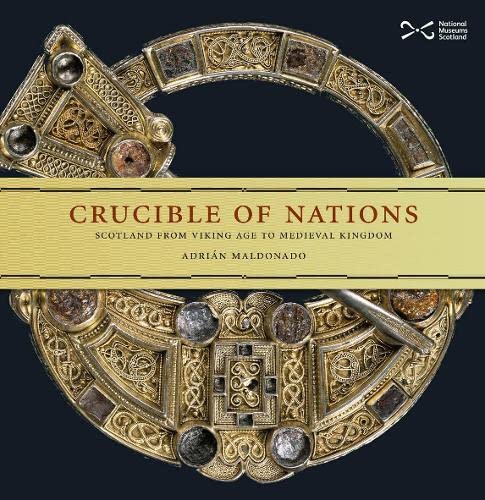Adrian gave us an analysis of the historical and archaeological evidence concerning what is known as the Viking Age – a period between late 8th to the 12 centuries when the influence of Norse invaders was strongly represented in Britain and parts of Europe. His focus was southern Scotland but unavoidably included other parts of the British Isles as sources of Viking artefacts, cultural influences and military expeditions which impacted this part of the world. An interesting point of departure early in the talk was that our common perception of Vikings as Norse raiders who plundered and pillaged then left ruin behind is far too simplistic, and fails to account for their lasting influence on the societies which they encountered. It is also a misconception that the Scandinavian influence which developed in the Shetlands and Orkneys gradually moved south over the decades. Much came north from the Danelaw which occupied large areas of what is now England. It seems, too, to be the case that much of what we have understood to be the activities of Norse raiders have, on the contrary, been those of Norse-influenced indigenous peoples. Some Gaels, Picts and Anglo- Saxons clearly took the Viking lessons to heart!
The term ‘viking’ translates as a ‘sea farer’ or, more specifically, as a sea raider or pirate. The first historical record of a true Viking raid is that on the monastery of Lindesfarne in 793. Religious establishments offered rich pickings to these heathen marauders and so monasteries and the like within reach of longships were principal targets at the time. For example Iona and Coldingham were other victims of Viking raids. However, despite the depredations experienced and the ever-present risk of further attacks, life, culture and religious observance continued much as before in most places. This is not to say that the appearance of the Vikings was treated as a little local difficulty:
reverberations from the Lindesfarne raid spread far and wide – noted with alarm by religious communities as far away as Francia (approx France). 793 marks the beginning of the ‘Viking Age’.
While Viking presence is best represented in the Scottish Isles, notably Orkney and Shetland, and the west of Scotland, there is also clear evidence of their influence in south eastern Scotland and the
Borders.
First as raiders, then as invaders and finally settlers, the Scandinavians integrated fully with indigenous populations, often forming a ruling class. Large Danish armies brought about the creation of the Danelaw in England and certainly invaded parts of Scotland. They were involved in raids on the kingdoms of Strathclyde and of the Picts: the siege of Dumbarton in 870, Battle of Dollar 875, raid on Dunkeld in 878. The presence of a ‘Viking Great Army’ is often inferred from artefacts, rather than an historical record. For example, clipped silver coins or chopped ingots were typical currency, and lead weights of recognisable design were also associated with the Danes. While these are well represented in the Talnotrie Hoard from Galloway, they have also been found in the St Helen’s Hoard, Cockburnspath, and Gordon in Berwickshire.
Settled communities and the huge trading networks developed by the Vikings are reflected in grave goods characteristic of Viking burials. For example, a typical selection from a grave includes Norse artefacts and other goods of perhaps Pictish, Irish and even Frankish origin. Such mixtures are commonly found in Viking graves and are indicative of extensive trading activity. In particular, finds such as carnelian beads at Coldingham, Repton and even Ukraine speak to the geographical range of Viking trade: carnelian stone would have come from India. Also, the human remains in such burials tell a story of integration. Stable isotope analysis of the bones has made it possible to deduce that the males originated in a colder climate and the females were generally local. DNA analysis of such bones, now on going, should eventually provide further insights.
Farming and domestic artefacts provide evidence of Norse settlements at Kirkcudbright and Carron Bridge in the 10th century. Similarly, and closer to home, there is also evidence of a 10th century Norse settlement at Auldhame in East Lothian. Norse combs have been found in a North Berwick Churchyard and at Castle Park, Dunbar. The Tyningham Stone bears carvings of possibly Viking symbolism.
Places which became trading or marketing hubs in the Viking Age may well have provided nuclei for some of the 12th Century royal burghs established by David I.
Thus we have them: Vikings as major contributors to the development of the countries of the British Isles through trade and settlement (and organised warfare!) rather than mere fly-by-night pillagers, ravishers and murderers. Though not as well endowed with archaeological evidence as other regions, Southern Scotland nevertheless experienced a significant Norse presence during the early medieval period.
Peter R
Sept 2022
